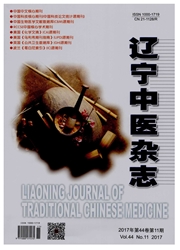

 中文摘要:
中文摘要:
为进一步挖掘人迎寸口脉法针灸的学术之精华,作者从临床应用的角度,提出了人迎寸口诊脉应以人迎及寸口处应指力最强的脉位进行力度对比,而不是比较两处脉管大小和宽度;浅析了"躁"脉的三个特征以及如何体会《灵枢·终始篇》所述几盛的技巧。同时指出人迎寸口脉法也有其不足性,一方面,人迎寸口脉法有严格的禁忌症,另一方面,在病位上,某些病证无虚实的变化,也没有阴阳脉的变化。因此,针灸临床不应局限于切诊人迎、寸口两个部位,有时需要结合其他诊法进行诊断,四诊合参,辨证施治,从而避免针灸取穴的盲目性,以提高针灸临床的疗效。
 英文摘要:
英文摘要:
For further mining Renying Cunkou pulse diagnostic method of acupuncture and moxibustion academic essence,the author from the perspective of clinical application proposed Renying Cunkou pulse should be the strongest pulse position of Renying and Cunkou and not compare the vessels sizes and width. It discussed the three features of Zao pulse and how to experience Sheng pulse in Lingshu. Also it pointed out that Renying Cunkou pulse diagnostic method has its shortcomings. On the one hand,Renying Cunkou pulse diagnostic method has a strict contraindication. On the other hand,some diseases have no actual situation changes or no change of the pulse of Yin and Yang. Therefore,in clinic acupuncture and moxibustion treatment should not be limited to palpation of attack. Two parts of the Cunkou,sometimes need combined with other diagnostic methods. The combination of the four diagnostic methods based on syndrome differentiation can avoid acupuncture blindness in order to improve the efficacy of clinical acupuncture and moxibustion.
 同期刊论文项目
同期刊论文项目
 同项目期刊论文
同项目期刊论文
 期刊信息
期刊信息
